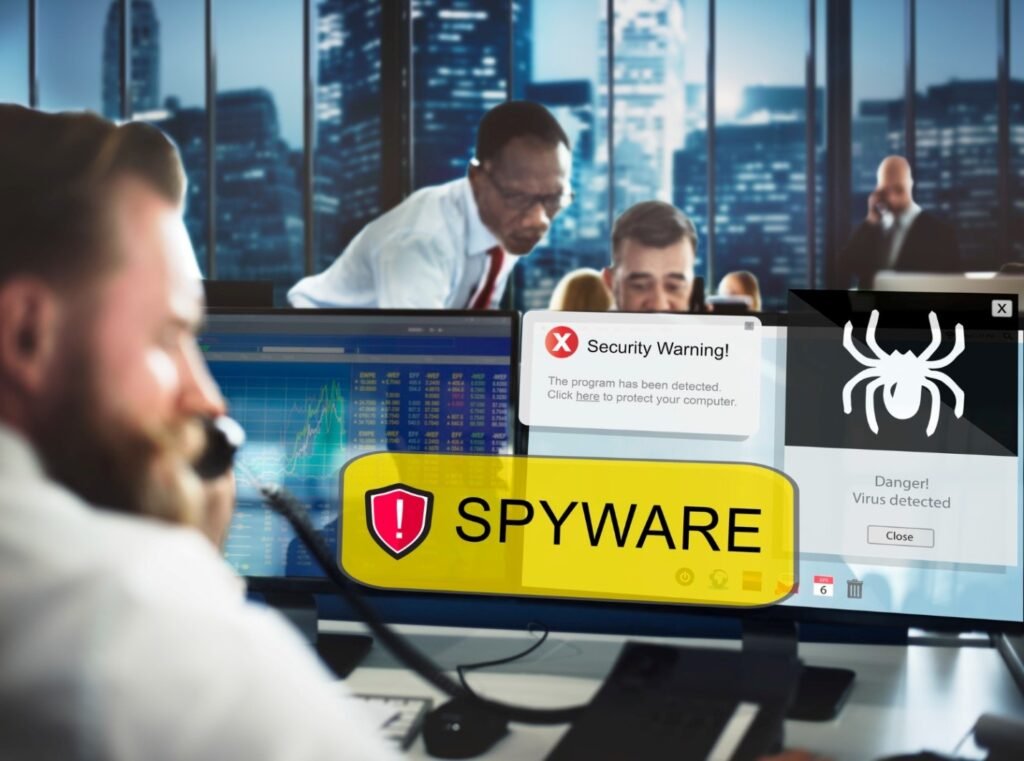The prevalence of malware has become a looming threat in the virtual landscape. Malicious software, commonly known as malware, poses a significant risk to individuals, businesses, and even nations. This article delves into the depths of malware, exploring its various forms and the profound impact it can have on cybersecurity.
Defining Malware
Malware is a broad term encompassing a variety of malicious software designed to infiltrate and damage computer systems. This includes viruses, worms, Trojans, ransomware, spyware, and more. These covert programs are crafted with the intent of disrupting normal computing operations, stealing sensitive data, or gaining unauthorized access to systems.

Forms of Malware
- Viruses: These are programs that attach themselves to legitimate files, spreading from one host to another. Once activated, they can corrupt or delete files, causing widespread damage.
- Worms: Worms replicate themselves and spread across networks without the need for a host file. They often exploit vulnerabilities in operating systems, leading to rapid and widespread infections.
- Trojans: Disguised as legitimate software, Trojans deceive users into downloading and installing them. Once inside a system, they grant unauthorized access to cybercriminals.
- Ransomware: This malicious software encrypts files, rendering them inaccessible until a ransom is paid. The rise of ransomware attacks has posed a severe threat to businesses and individuals alike.
- Spyware: Designed to covertly monitor and gather information about a user’s activities, spyware can compromise sensitive data, including login credentials and personal information.

Impact of Malware
- Data Breaches: Malware is a common culprit behind data breaches, leading to the exposure of sensitive information. This can have severe consequences for individuals and organizations, including financial losses and reputational damage.
- Financial Losses: Businesses can suffer significant financial losses due to malware attacks. The costs may include ransom payments, system restoration, and the implementation of enhanced cybersecurity measures.
- Disruption of Operations: Malware attacks can disrupt normal business operations, leading to downtime and productivity losses. This can be especially detrimental for businesses that rely heavily on digital systems.
- Identity Theft: Malware, such as spyware, can lead to identity theft by gathering personal information without the user’s knowledge. This can have long-lasting consequences for individuals, impacting their financial and personal lives.
- Compromised Security: Malware compromises the overall security of computer systems, making them vulnerable to further attacks. This can create a domino effect, with one breach leading to multiple security lapses.
Mitigating the Impact
- Up-to-Date Antivirus Software: Regularly update and use reputable antivirus software to detect and eliminate malware threats.
- Firewalls and Network Security: Implement robust firewalls and network security measures to prevent unauthorized access and the spread of malware.
- User Education: Educate users about safe online practices, such as avoiding suspicious emails and refraining from downloading files from untrustworthy sources.
- Regular Backups: Keep regular backups of important data to minimize the impact of a ransomware attack. Ensure that backups are stored securely and are easily retrievable.
Fileless Malware: Traditional malware often leaves traces on a system, making it easier to detect. Fileless malware, however, operates in a way that doesn’t involve installing malicious files on the target system. This makes it particularly challenging to identify and defend against, as it can execute directly in the computer’s memory.
Advanced Persistent Threats (APTs): APTs are sophisticated, long-term cyberattacks typically aimed at high-profile targets, such as government entities or large corporations. Malware associated with APTs is designed to remain undetected for extended periods, allowing threat actors to gather sensitive information over time.
IoT Exploitation: With the proliferation of Internet of Things (IoT) devices, cybercriminals are increasingly targeting these connected devices. Malware can exploit vulnerabilities in smart home devices, industrial control systems, and other IoT endpoints, posing new challenges for cybersecurity.
AI-Driven Malware: Cyber attackers are incorporating artificial intelligence (AI) into their malware to enhance its capabilities. AI can be used to optimize attack strategies, identify vulnerabilities, and adapt to evolving cybersecurity defenses, making the malware more potent and harder to combat.
Protecting Against Evolving Malware Threats
- Behavioral Analysis: Traditional signature-based antivirus solutions may struggle to keep up with the constantly evolving nature of malware. Behavioral analysis, which focuses on detecting malicious behavior rather than relying on known signatures, is becoming increasingly crucial for identifying and stopping new and sophisticated malware strains.
- Endpoint Detection and Response (EDR): EDR solutions provide continuous monitoring and real-time response to potential threats on endpoints. By analyzing endpoint activities and behaviors, EDR helps detect and mitigate the impact of malware attacks before they can cause extensive damage.
- Zero Trust Security Model: Adopting a Zero Trust security approach involves assuming that no user or system is inherently trustworthy, regardless of their location or network connection. This model emphasizes continuous verification, strict access controls, and least privilege access to minimize the risk of malware infiltrating trusted networks.
- Patch Management: Regularly updating and patching software and operating systems is crucial for closing potential vulnerabilities that malware may exploit. Cybercriminals often target systems with outdated software, taking advantage of known vulnerabilities.
- Collaboration and Information Sharing: Cybersecurity threats are dynamic and constantly evolving. Collaborating with other organizations, sharing threat intelligence, and participating in information-sharing initiatives can enhance collective cybersecurity efforts and help preemptively identify emerging malware threats.


Leave a Reply